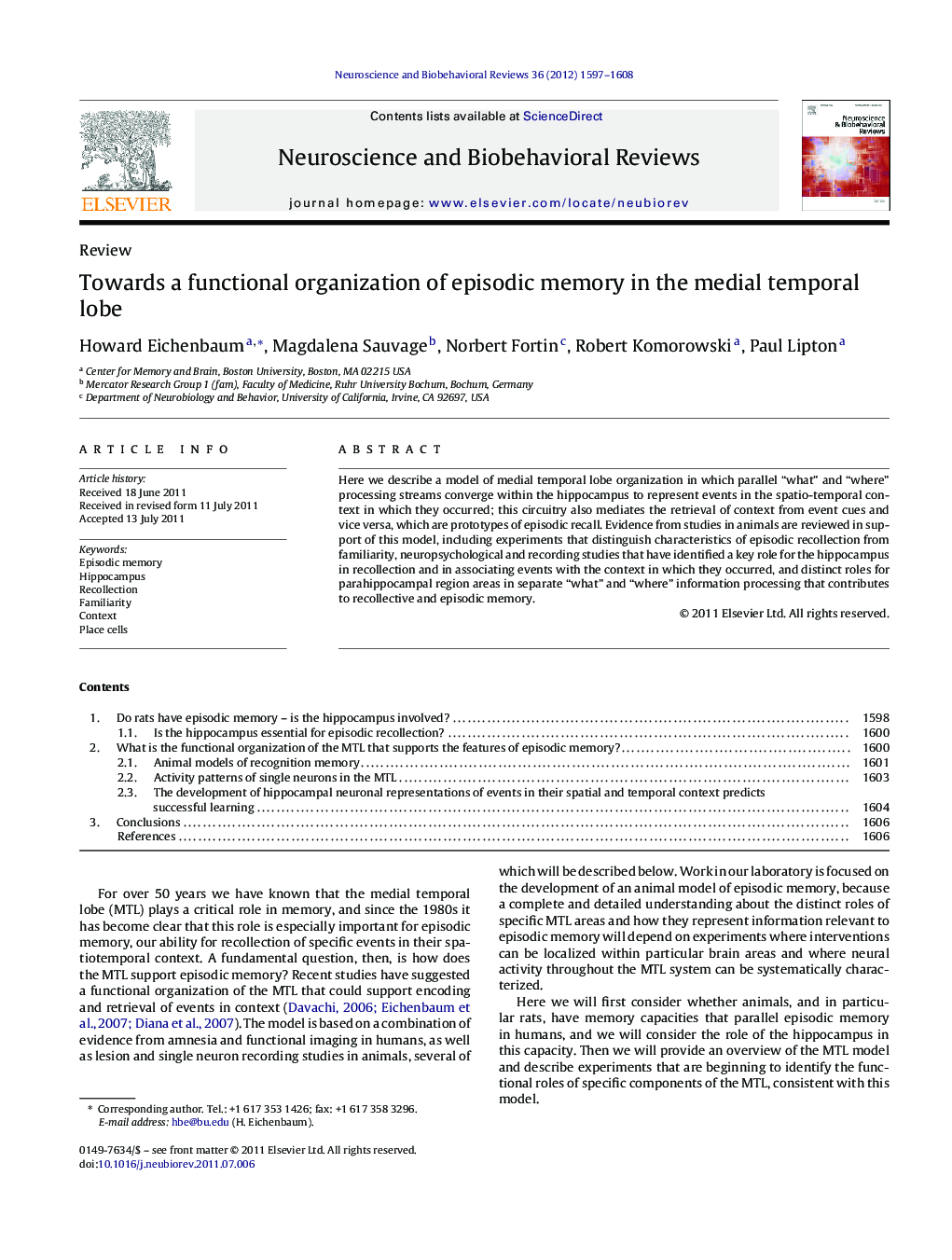| Article ID | Journal | Published Year | Pages | File Type |
|---|---|---|---|---|
| 937864 | Neuroscience & Biobehavioral Reviews | 2012 | 12 Pages |
Here we describe a model of medial temporal lobe organization in which parallel “what” and “where” processing streams converge within the hippocampus to represent events in the spatio-temporal context in which they occurred; this circuitry also mediates the retrieval of context from event cues and vice versa, which are prototypes of episodic recall. Evidence from studies in animals are reviewed in support of this model, including experiments that distinguish characteristics of episodic recollection from familiarity, neuropsychological and recording studies that have identified a key role for the hippocampus in recollection and in associating events with the context in which they occurred, and distinct roles for parahippocampal region areas in separate “what” and “where” information processing that contributes to recollective and episodic memory.
Graphical abstractFigure optionsDownload full-size imageDownload as PowerPoint slideHighlights► Components of the MTL have distinct processing functions. ► The perirhinal and lateral entorhinal cortex process object and event information. ► The parahippocampal and medial entorhinal cortex process spatio-temporal context. ► The hippocampus selectively contributes to episodic recollection. ► The hippocampus maps events within a spatiotemporal contextual framework.
